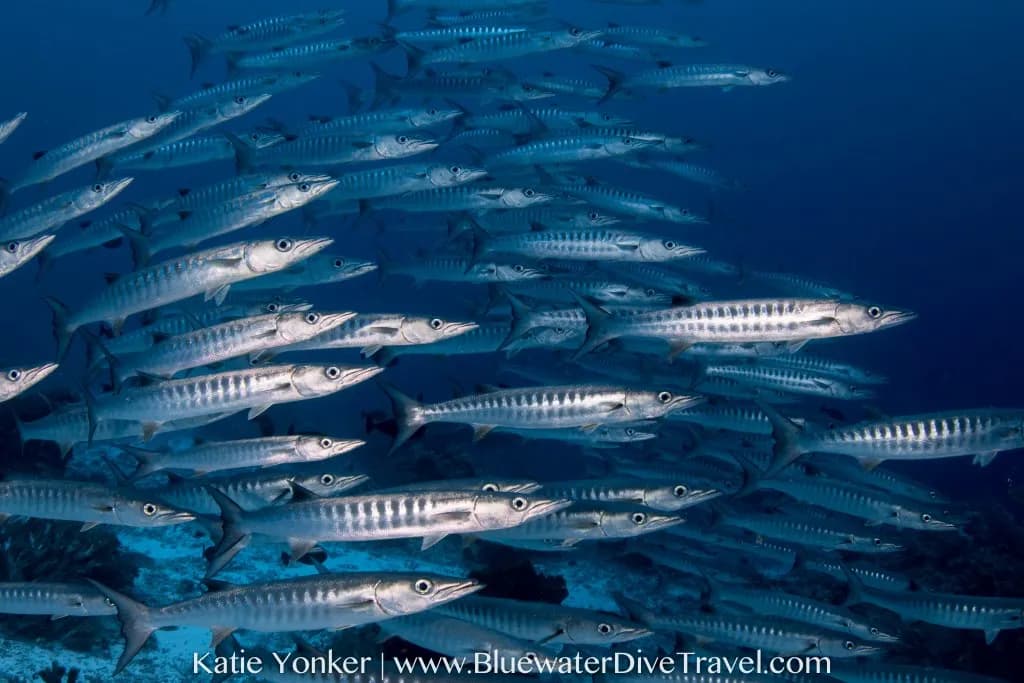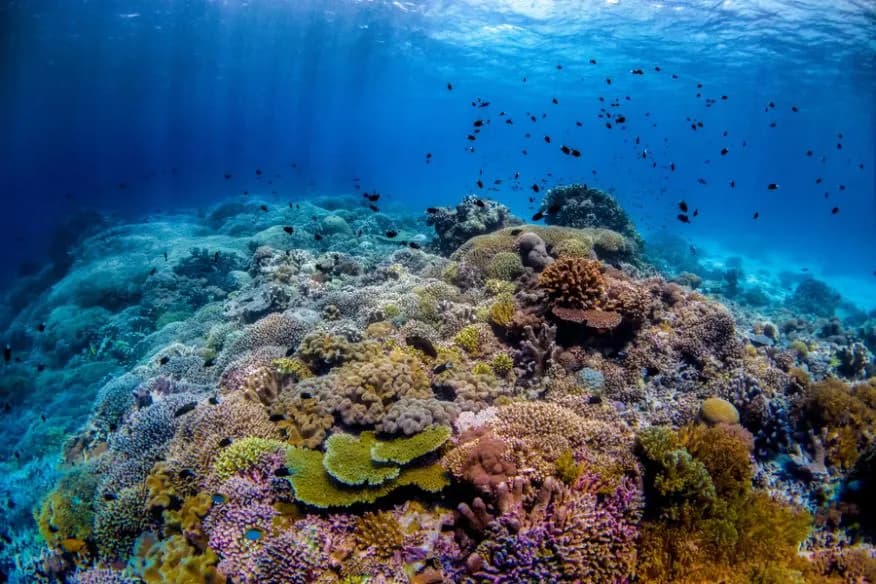
Diving Tubbataha Reef is sought after for its incredible marine biodiversity, dynamic underwater terrain, and a wide variety of large marine animals including sea turtles, manta rays, various sharks, including the occasional whale sharks.
Scuba Dive Level
All Levels

Visibility
32 to 114 feet (10 to 35 meters)
Average Water Temperature
84
Pelagic Encounters
Stunning Reefs & Corals
Diving Tubbataha Reef is famous for its incredible marinebiodiversity, dynamic underwater terrain, and a wide variety of large marine animals, including sea turtles, manta rays, and various shark species.Tubbataha Reefs Natural Park is an isolated and protected marine park that can only be reached by Tubbataha liveaboard. It is arguably themost biodiverse scuba diving destination in the Philippines.
Tubbataha Park ranks number one on our list of Best Diving in the Philippines.
Tubbataha can only be dived via liveaboard during a shortdiving season from March to June each year. Tubbataha liveaboards fill up early, so plan your trip well in advance!
Tubbataha Reefs is a UNESCO World Heritage site located in the Sulu Sea to the east of Palawan. The region's remote location, combined with challenging access and limited diving season, make it one of the healthiest and least exploited areas of reef in the world. Throughout the 100,000 hectares of the spectacular reef system, divers lucky enough to visit will discover a wide array of pristine coral gardens mixed with steep walls dropping down into the deep blue. Tubbataha Park area isan important fish spawning and breeding site and is significant in terms of global marine life species diversity and richness.
Tubbataha Reefs is divided into three main areas: North Atoll, South Atoll, and Jessy Beazley Reef. Tubbataha liveaboards visit each of the atolls to enable divers to experience a wide variety of Tubbataha dive sites.
On a liveaboard to Tubbataha, divers are blown away by the never-ending display of multi-colored reef fish, lobsters, stingrays,and turtles on every reef. At deeper spots on the northern side of North Atoll, numerous shark species can be seen, including frequent encounters with white tips, black tips, and grey reef sharks, as well as possible sightings of silky and guitar sharks. The southern side of North Atoll is a hotspot for large pelagics such as giant trevally, tuna, and barracuda, alongside manta rays and turtles. South Atoll is a great hammerhead site, while wrecks on both atolls are fantastic for macro species such as pygmy seahorses, nudibranchs, and tiny crustaceans. The northwestern Jessie Beazley Reef is another area to see hammerhead sharks and other shark species. The fast currents also support huge branching hard corals and all the associated marine life.
Learn more about thebest dive sites in Tubbataha Reef.Each dive site in Tubbataha Reefs National Park boasts a unique range of species to discover.
Pick a dive spot or keep scrolling to read the entire list:
1. Amos Rock - Also known as Southwest Rock, this is a popular dive site at the North Atoll of Tubbataha, featuring various types of beautiful corals, massive gorgonian fans, and large fish such as snappers, mackerels, groupers, and the fascinating Napoleon wrasses. Various reef sharks are also commonly seen at Amos Rock and the night dives offer great macro diversity.
2. Washing Machine - Looking for manta rays and sharks? Head to Washing Machine, a dive site in the North Atoll, to ride the currents and encounter all the big stuff.
If you're interested in diving with sharks, you may also want to check out our list of the best places for shark cage diving or read about diving with tiger sharks in the Maldives' Southern Atolls.
3. Malayan Wreck - If you are a macro photography enthusiast, you can get some great shots at Malayan Wreck, including nudibranchs, crabs, and shrimps. Wreck divers will also get their dose of adventure and exploration at this Tubbataha dive site.
Check out our list of the best shipwrecks to scuba dive here.
4. Seafan Alley - For exceptionally colorful coral reefs, look no further than Seafan Alley in the North Atoll. Featuring plentiful gorgonian sea fans, make sure to keep a lookout for pygmy seahorses!
5. Shark Airport - Another dive site featuring great shark diving is the aptly named Shark Airport, where you'll find these elegant animals either swimming around or resting along the reef. Due to its strong currents, this dive site is better suited for advanced divers.
The best time to dive Tubbataha Reefs is limited to its short diving season from March through June, so make sure you plan your trip well in advance. The sea conditions are quite calm during the diving season for Tubbataha liveaboards, which is important for the roughly 10-hour crossing to reach the area from the departure point.
Tubbataha also ranks first in our article on the Best Diving in Southeast Asia.
Fly into Manila (MNL) and take a one-hour flight to Puerto Princesa (PPS), the departure point for Tubbataha liveaboards. It takes around 10 hours to get to Tubbataha Reef from Puerto Princesa, giving you time to rest before you begin diving.
It is only possible to dive Tubbataha Reefs via liveaboard from March to June. There are numerous good liveaboard options in Tubbataha from mid-range boats to luxury yachts.
Outside the Tubbataha season, many liveaboards will visit Malapascua Island or the reefs around Dumaguete, Dauin, Coron and Apo.
Topside activities in Tubbataha Reefs are limited to whatever entertainment your liveaboard has to offer. Relax and read a book, sunbathe, and enjoy the scenery during your surface intervals. Tubbataha is also a good destination for snorkeling. Experience more of the Philippines by adding a trip to one of the country's other incredible diving destinations before or after your liveaboard. Discuss the options with your travel advisor to make the most of your trip to the Philippines!
Bluewater Travel can book you a liveaboard to Tubbataha, and almost every scuba diving destination you can think of at the same price or even less than booking any other way! Our team of travel advisors knows the boats, diving, and logistics better than anyone else in the industry.
The rates shown below are per person in USD. Some operators may quote in a different currency and the final pricing may vary depending on the latest exchange rates.
Explore Tubbataha
